By Louis Cahill
If you are new to trout fishing, you may find yourself asking, “Where exactly are the fish?”
At first the river may seem like a puzzle. Especially large rivers where anglers new to the sport are easily overwhelmed by options. Once you learn to read the water and understand what draws fish to certain types of water, the river becomes a road map with great holding water marked everywhere.
The most basic principal which guides the angler to holding water is called “The 3 Cs.” They stand for current, cover and cuisine. The three things every trout needs to be happy and survive. The trout needs current to deliver food. He needs cover for safety and a reliable food supply. These three things can be found anywhere trout hold. If they are not present, neither are the trout.
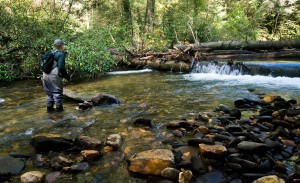 There are a few things to add to that very basic list as you start your search for trout. Although the trout wants to be near current, he can’t afford to exert the energy to hold in that current. He needs a refuge where he can sit and wait for food to arrive. He also needs oxygen. Oxygen levels are not homogenous in a river. Disturbances in the water’s surface add oxygen and trout like to be near them. Colder water always holds more oxygen and trout are drawn to it. Cover may come in many forms, including depth, structure, surface disturbance and overhanging vegetation.
There are a few things to add to that very basic list as you start your search for trout. Although the trout wants to be near current, he can’t afford to exert the energy to hold in that current. He needs a refuge where he can sit and wait for food to arrive. He also needs oxygen. Oxygen levels are not homogenous in a river. Disturbances in the water’s surface add oxygen and trout like to be near them. Colder water always holds more oxygen and trout are drawn to it. Cover may come in many forms, including depth, structure, surface disturbance and overhanging vegetation.
Lots of options, but as you learn to understand the trout and his habits these thing make themselves obvious. You learn to look at big water in sections as if it were many smaller streams running together. You will begin to visually recognize the kind of water where you have caught fish before and before you know it, finding fish becomes second nature.
Here’s a list of 10 types of water where you will always find trout.
Seams
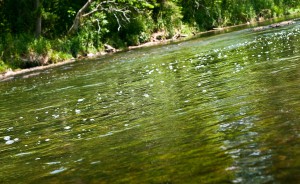 Seams are the places where fast water flows and slower water flows meet. They are caused by friction from structure in the stream and are often marked by foam lines. This is why anglers say “Foam is home.” Trout sit in the edge of the slow water waiting for the current to bring them food.
Seams are the places where fast water flows and slower water flows meet. They are caused by friction from structure in the stream and are often marked by foam lines. This is why anglers say “Foam is home.” Trout sit in the edge of the slow water waiting for the current to bring them food.
Drop-offs
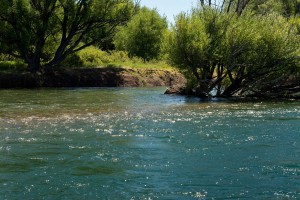 These deep, dark potholes so often found on the downstream edge of riffles are trout magnets. They offer the trout everything he needs. The safety of deep water, oxygen from the riffle and a steady supply of the insects which live in the riffle.
These deep, dark potholes so often found on the downstream edge of riffles are trout magnets. They offer the trout everything he needs. The safety of deep water, oxygen from the riffle and a steady supply of the insects which live in the riffle.
Buckets in Riffles
Think of these depressions in riffles as miniature versions of drop offs. Trout love them for all the same reasons. Visually, they can be quite subtile so look carefully. Depressions in shallow riffles can hold surprisingly large fish.
Undercut Banks
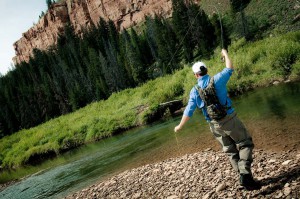 These are the labyrinths of big fish. Stream banks, especially in outside bends, can be deeply undercut, offering the ultimate in cover. The nearby current is a conveyor belt of food, with tasty bits being pushed right to the edge. It is not possible to fish too close to these banks.
These are the labyrinths of big fish. Stream banks, especially in outside bends, can be deeply undercut, offering the ultimate in cover. The nearby current is a conveyor belt of food, with tasty bits being pushed right to the edge. It is not possible to fish too close to these banks.
Sweepers
Sweepers are trees which fall into the river. They remain anchored to the bank at the roots and sweep downstream at an angle. Sweepers create beautiful seams which always attract trout.
Boulders
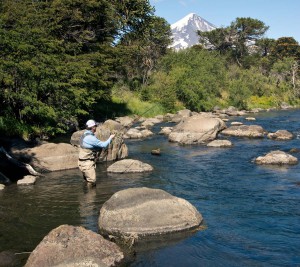 Every boulder offers a trout two points of refuge. One on the seam behind and one on the cushion where the water hits the upstream side. Whether on the bank, midstream or strewn in boulder gardens, boulders are perfect cover for trout.
Every boulder offers a trout two points of refuge. One on the seam behind and one on the cushion where the water hits the upstream side. Whether on the bank, midstream or strewn in boulder gardens, boulders are perfect cover for trout.
Low Hanging Vegetation
Dense vegetation, which overhangs the edge of the water where water depth is sufficient to hold fish, is always productive. These leafy resorts offer great cover, cooler water and a great source of food falling from above. If your casting skill is good enough to put your fly well under the limbs, you’ll like the results.
Deep Runs
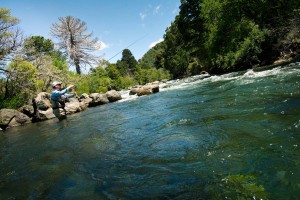 Wherever moving water becomes deep, it slows. Especially near the bottom where friction from structure creates a sub-surface seam. No matter how fast the surface flow may be, if there is sufficient depth and structure on the bottom, there will be holding water for trout.
Wherever moving water becomes deep, it slows. Especially near the bottom where friction from structure creates a sub-surface seam. No matter how fast the surface flow may be, if there is sufficient depth and structure on the bottom, there will be holding water for trout.
Tailouts
In classic riffle, run, pool formations faster runs will end in shallow tailouts before the next spill-over. The soft water of these tailouts hold fish, especially in high water. Too many anglers charge through these tasty spots with their eyes on the deeper water ahead.
Tributary Mouths
The spots where creeks, or even rivers, flow into the main current create seams and great feeding opportunities for fish. These are always worth exploring. When the tributary is stained it creates a line where dirty water meets clear. Big predators will sometimes use this dirty water to hide from prey. Target these with streamers.
I wouldn’t call this a definitive list by any means. There are lots more great places to look for fish. Fish behave differently in varying conditions and there are plenty of other places you’ll find them, but these are ten are reliable hot spots where you should always try a fly. Keep this list in your head next time you hit the water and look for these productive zones.
Louis Cahill Gink & Gasoline www.ginkandgasoline.com hookups@ginkandgasoline.com Sign Up For Our Weekly Newsletter!
Sign Up For Our Weekly Newsletter!

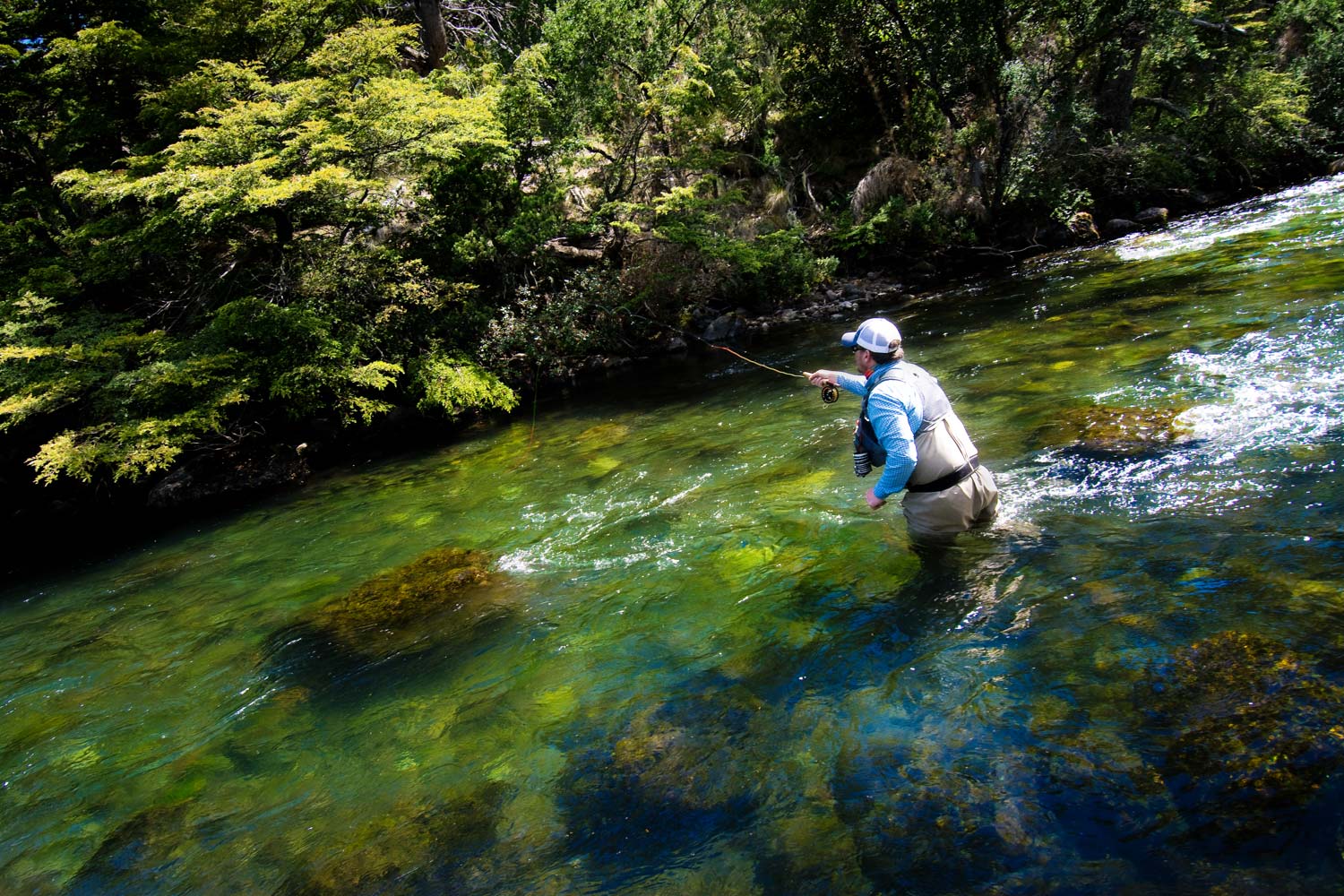
Great summary! You might follow it up with “places in a river that rarely hold many if any fish” which is where I seemed to be fishing this past weekend!
This list of large scale water types hits the nail on the head for beginners. Locating them is easy, but within each water type are the “sweet spots” which become go-to places that you know will hold catch-able fish. Sweet spots are discovered through experience, just pay attention. Often, just like bass fishermen, you will uncover patterns that combine river levels, currents, features, structure, lighting, time of day, etc. that work wherever you can find them.
By observing patterns of surface foam you can also detect those small scale, micro food conveying currents that many anglers overlook. Some of my favorite sweet spots include these very small current tongues and mini-riffs/rips. learning how to sweet spots is the real game changer. Guides make a living with their collection of hard earned sweet spots, and so can any persistent and observant beginner.
Been fishing for about 4 years now and I am still constantly asking “where exactly are the fish?” At least I finally understand pretty much all of the above concepts. Time to go practice!
I’m not guaranteeing it…but some…some…of those places might, maybe, perhaps also hold smallmouth bass, musky…
I’ve spotted MANY trout living in seams – they seem to love seams! 🙂 Seriously, though, this is a very true statement.
Very very informative article. A beginner can really learn quickly from your article. I love fishing & always love to learn techniques about fishing. Thanks a lot for sharing.
Useful article for those who like trout fishing. Thanks a lot for sharing